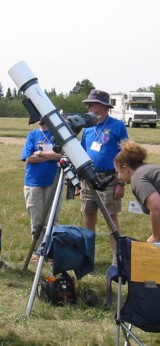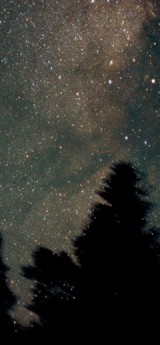What's Up in Space?
Annular Solar Eclipse
October 14, 2023
Stay tuned for more information about the upcoming annular solar eclipse!
Learn more about eclipses
Get excited about eclipses with Outreach Coordinator, Jenna Hinds! We will be posting every other day leading up to the June 10th solar eclipse. Tune in to understand the dos and don’ts of solar eclipse observing and have your questions answered by an expert. Happy #AstronomyDay! pic.twitter.com/Zz7GOHjcVs
— RASC National (@rasc) May 15, 2021
Why is looking at an eclipse so bad?
Ever wondered why looking directly at a Solar Eclipse can be damaging to your eyes? Watch this video by Jenna Hinds where she explains the science behind it! Tune in as we upload videos in the days leading up to the June 10th Solar Eclipse. #solareclipse2021 pic.twitter.com/upi7lU9HdE
— RASC National (@rasc) May 19, 2021
How come we only get eclipses sometimes?
Watch as our Outreach Coordinator Jenna Hinds demonstrates the Moon & Sun alignment which allows us to have an annular solar eclipse on June 10! Tune in for more videos every other day. #solareclipse pic.twitter.com/b7pdI5r5CO
— RASC National (@rasc) May 23, 2021
Solar and lunar eclipse pairs!
Did you know that solar eclipses are usually accompanied by lunar eclipses which are weeks apart? In fact, a lunar eclipse is taking place tomorrow around 5:40 am EDT! pic.twitter.com/oTqOBpSNWh
— RASC National (@rasc) May 25, 2021
Where should you go to see it?
AstroImaging takes more than just clear skies to perfect! We will be providing tips on the solar eclipse which includes deciding where to capture it from and what tools to utilize. #solareclipse pic.twitter.com/ibsacBHIKV
— RASC National (@rasc) May 29, 2021
How come only some parts of the Earth get to see eclipses?
Do you want to know if you will be able to see the June 10th solar eclipse? There's good news and bad news depending on where you live! Hint: the good news is for the people up north! pic.twitter.com/4B2WIyQtGm
— RASC National (@rasc) June 2, 2021
How to view a solar eclipse
How to view the June 2021 Solar Eclipse with things you have at home by Jenna Hinds! Remember to not look directly at the sun and stay safe. #solareclipse2021 pic.twitter.com/RUrkGB9STS
— RASC National (@rasc) May 17, 2021
Solar eclipse DON'Ts
You heard it here first "Don't look directly at the eclipse." But there are a few other things to keep in mind for your own safety! Jenna Hinds will be your guide this year for the June 10th solar eclipse! pic.twitter.com/ckSzakUY7K
— RASC National (@rasc) May 21, 2021
Why eclipses on Earth are special
Do you ever wonder how both the Moon and the Sun appear the same size to us even though the Sun is much bigger? This video explains this concept and how it plays into the eclipses we see on Earth! #eclipse pic.twitter.com/T5gtjwjLAi
— RASC National (@rasc) May 25, 2021
Types of Eclipses
Do you frequently hear the words "annular" "total" or "partial" when eclipses are brought up and wonder what they mean? There are multiple ways by which an eclipse forms thus the different types! #Eclipse2021 pic.twitter.com/XtJJtd6PBF
— RASC National (@rasc) May 27, 2021
Cell phone eclipse photography
This video, by our Outreach Coordinator Jenna Hinds, explains how it could be possible for you to take phone solar eclipse images! To learn more about the June 10 annular solar eclipse, keep watching our videos! pic.twitter.com/wC7l7XtaJ0
— RASC National (@rasc) May 31, 2021
Mars at Opposition
October 13, 2020
Closest Approach October 6, 2020
Once every 2.1 years, the Earth ends up sandwiched between the Sun and Mars! At that point, Mars is at its closest to Earth, and makes for great viewing. Read more here!


